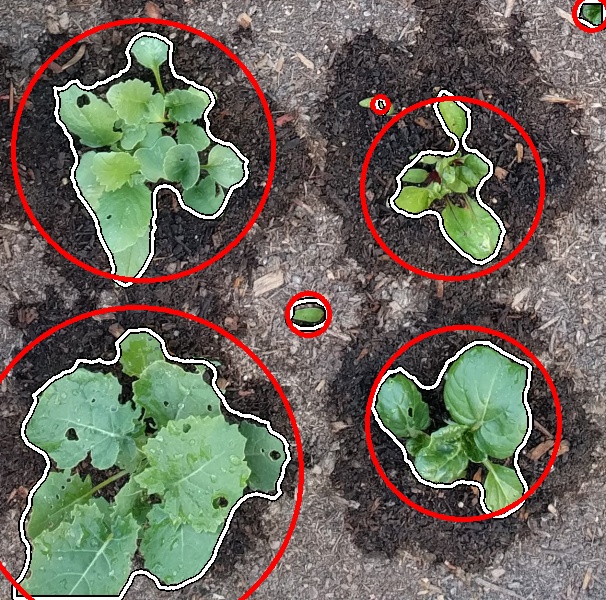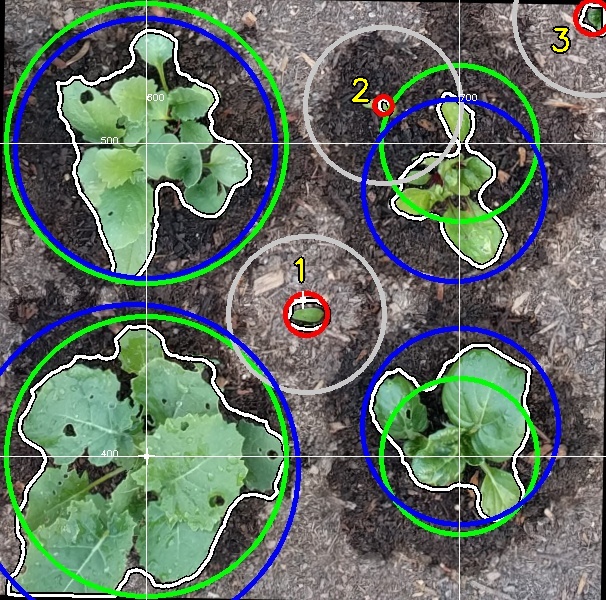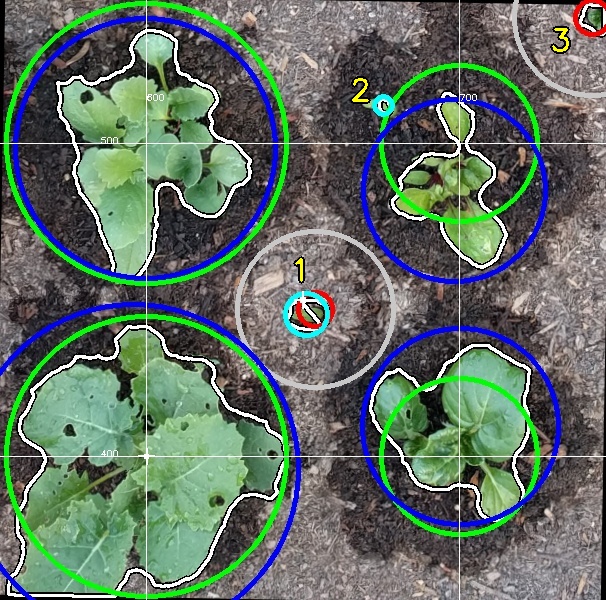Weed detection
How weed detection works.
If we process a photo of our garden bed without providing any information, we would detect all the plants in the image:

However, we want to determine what is a weed, and the locations of those weeds.
So we feed the plant detection software some calibration parameters, letting it determine the location of the objects in the image. Based on the known locations of desired plants in the image, we can determine which plants are desired plants, and which ones are weeds.
Known (desired) plants are marked with a green circle, the detected plants that match the desired plants are marked with a blue circle, and the detected plants that do not match desired plants are marked with a red circle (those are weeds):

But wait! Our weeding tool is a certain size, and disrupts the soil within a certain area, its region of influence. We can represent that disrupted region with a grey circle:

1, since its region of influence is intersecting the desired plant’s circle. We also see that we wouldn’t be able to weed 2 without significantly disrupting the upper right plant. We can weed 3 safely.
The software takes the weeding tool size into consideration with a feature called Safe Remove.
It adjusts the location to be weeded for weed 1 away from the lower left plant, removes weed 2 from the list since it can’t be removed safely, and keeps 3 on the list of weeds to remove since there are no conflicts. You can see the weeds to remove and the weeder location represented with the red and grey circles as before, and cyan circles drawn for weeds that may not be removed completely (or at all) because the action might harm a desired plant:

You may now instruct the machine to remove the weeds marked in red, and remove the weeds marked in cyan by hand.
Program text output
7 plants detected in image.
4 known plants inputted.
Plants at the following machine coordinates ( X Y ) with R = radius are to be saved:
( 600 400 ) R = 45
( 600 500 ) R = 45
( 700 400 ) R = 25
( 700 500 ) R = 25
2 plants marked for removal.
Plants at the following machine coordinates ( X Y ) with R = radius are to be removed:
( 743 541 ) R = 6
( 654 447 ) R = 6
2 plants marked for safe removal.
Plants at the following machine coordinates ( X Y ) with R = radius were too close to the known plant to remove completely:
( 651 446 ) R = 7
( 676 512 ) R = 3
4 detected plants are known or have escaped removal.
Plants at the following machine coordinates ( X Y ) with R = radius have been saved:
( 700 410 ) R = 31
( 596 396 ) R = 53
( 698 485 ) R = 29
( 600 499 ) R = 42